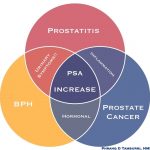COVID-19: A Naturopathic Physician’s Journey Through the Pandemic
DECKER WEISS, NMD, FASA
As of September 25, 2020, there were already 984 906 documented deaths worldwide from COVID-19; 203 240 of these deaths were in the United States.1 My general impression, from my meetings with US Department of Health and Human Services (HHS) and the Office of the Assistant Secretary for Preparedness and Response (ASPR), is that worldwide deaths (especially in China and India) have been underreported. Emerging from conventional medicine, following the hydroxychloroquine debacle, were 5 emergency-use authorization (EUA) medications2 and a new “standard of care” called “proning” (ie, placing patients in a prone position to increase oxygen saturation and avoid mechanical ventilation – it really helps!)3 There are currently 590+ drugs in development and various planning stages, as well as 310+ trials by the Food & Drug Administration (FDA), yet there are still no treatments that meet the standards of FDA approval. Currently, 46 vaccines are in phases 1-3; however, the concept of “warp speed” vaccine development is controversial.4,5 The American public does not appear to wholly embrace the idea of vaccines; 1 in 3 people polled in August stated that they would not get a COVID-19 vaccine.6
As a naturopathic physician who trained in hospitals and field trauma, it was a good fit for me to engage in COVID-19 diagnosis and treatment due to the lack of prevention, creation of resilience, and treatment options for this pandemic. To date, I have diagnosed and treated over 400 COVID-19 positive and symptomatic patients who are considered “at-risk” due to age and comorbidities. So far, I have not referred any of my patients to the hospital, have not needed mechanical ventilation support, and have not lost a patient. Granted, this is anecdotal. However, in a pandemic I feel it is the obligation of those physicians who are having success to bring this information to their peers, in an honest and open way. This article serves as a reference for diagnosis, prevention, and treatment of COVID-19, using a combination of transparent evidenced-based models and clinical pearls.
SARS-CoV-2 Simplified
SARS-CoV-2, the virus responsible for COVID-19, attacks through the angiotensin-converting enzyme-2 (ACE2) receptor; therefore, any part of the body with an abundance of these receptors can be vulnerable. Lungs are the obvious vulnerability, but ACE2 receptors are in many other parts of the body as well, including the heart, blood vessels, kidneys, brain, intestines, and more.7 This is why COVID-19 can show up in so many different places and manifest in such a variety of symptoms.
Diagnostics
Molecular tests, such as PCR/viral RNA/nucleic acids performed from swabs, can have a false-negative rate anywhere from 2% to 37%,8 whereas antigen swab testing can have a false-negative rate as high as 50%.9 Antibody tests performed on a blood specimen and reflecting past infection can have a 0-30% false-negative rate, depending on the course of infection and study reviewed.10 However, even if accurate, antibodies can wane over a few months.11 In my office, I use lung ultrasound to confirm diagnosis and to monitor the progress of the illness. A small but significant study demonstrated that 100% of moderate, severe, and critical patients show B-lines and abnormal pleural lines and have bilateral involvement.12
Prevention
Prevention comes in 2 flavors: 1) evidence-based data; and 2) clinical intuition.
Evidence-Based Prevention
Vitamin D
A European population-based study found that the prevalence of severe vitamin D deficiency (defined in this study as 25-OH-vitamin D less than 25 nmol/L, or 10 ng/dL) strongly and significantly correlated with the COVID-19 death rates per million people.13 Additionally, low vitamin D levels have been shown to indirectly relate to unregulated inflammation and cytokine storm.14 Personally, I recommend 10 000 IU of vitamin D3 daily, along with appropriate amounts of vitamin K (and possibly vitamin A as well).
Vitamin C
Although several trials in other countries have studied direct effects of vitamin C on COVID-19, no such trials have been conducted in the United States. However, high-dose intravenous ascorbic acid is being used along with other agents to treat COVID-19 in US emergency rooms under what is called the MATH+ protocol, with anecdotal success.15 I commend doctors Joseph Varon and Pierre Kory for their open-mindedness and efforts in developing and utilizing this integrative protocol in a hospital setting.
Melatonin
Melatonin supports T-cell responses16,17 and has been suggested as an agent with potential benefit in COVID-19 due to its immunomodulatory properties.18 Of note, healthy melatonin levels is one of the reasons postulated as to why children are generally asymptomatic compared to adults.19
Potential Treatment Options
Silver Nanoparticles
Probably no antiviral protocol has been as controversial as silver. There are dozens of studies in over 10 countries on the various types, combinations, parts per million (PPM), and preparations of silver, with claims as controversial as curing HIV and reports by zealots who consumed so much silver that it turned them “fatal” blue. Research studies tend to agree that a silver product that is low in PPM (15 or under), has a particle surface area (PSA) over 100, and is low in nanoparticles (0.4-0.9 nm) may have antiviral (including anti-coronavirus) activity. An animal study demonstrated antiviral effects of silver nanoparticles on coronaviruses other than SARS-CoV-2.20 In a small study in India, silver nanoparticles mixed with bronchodilators were shown to have a positive effect on COVID-19 patients.21 What’s missing from silver research is a single formula, studied over time, on specific viruses, and which has built-in safety components. However, in the absence of other antivirals, and considering the overwhelming use by holistic practitioners throughout the world, using silver nanoparticles for COVID-19 can be tempting. In order to limit one’s silver exposure over time, I recommend that it only be used when there is an issue rather than using it for prevention. The World Health Organization has established clear guidelines for the amounts of silver we can tolerate over time so that safety can be assured.22
Curcumin/Curcuminoids/Tumerones
Antiviral research on curcumin from (a key constituent of Curcuma longa and an ingredient in turmeric) faces a similar dilemma as silver, namely that the studies are spread throughout various countries and used different preparations. Many non-COVID-19 studies have demonstrated cytokine modulation by curcumin, including the inhibition of nuclear factor kappa-B (NF-ĸB), as well as antiviral activity and tissue protection.23 Research has revealed the ability of curcumin to bind to the receptor-binding domain (RBD) site of spike protein on SARS-CoV-2 as well asACE2 receptor.24 Translated, curcumin can potentially inhibit the entry of SARS-CoV-2 into human cells. Animal studies have also shown that curcumin protected against non-COVID-19 viruses and the associated cytokine storm.25
If these studies translate to humans, curcumin may inhibit the entry of SARS-CoV-2 into human cells, help prevent cytokine storms, possibly prevent post-COVID-19 pulmonary fibrosis, and have an antiviral effect. All of these potential attributes make curcumin a very interesting consideration for practitioners looking for options. In my office I use a preparation containing curcumin, curcuminoids, and tumerones, and I base the dose on the severity of the symptoms. My most common dosing is 2 capsules 3 times a day, but I may increase it to 2-3 caps 5-8 times a day in severe cases. I back off that dosage if loose stool occurs.
Additional Candidates
Of note, green tea catechins,26 rutin,27 cysteine and theanine28 are all backed by research demonstrating inhibition of virus-binding, attenuation of viral replication, and/or immune modulation.
Rosmarinic acid is drawing attention for its beneficial effects on T-cell activity, as demonstrated in a mouse study.29 T-cell activity may help protect against a severe form of the virus,30 promote long-term immunity following prior coronavirus infection,31 and protect against post-COVID-19 syndrome (including pulmonary fibrosis and more).32
Glutathione in its various protective forms may also support COVID-19 patients, as those with low levels of endogenous glutathione have been found to have more serious cases of COVID-19 and a higher rate of mortality.33
Blood Pressure Medications
In my office, I am limiting or moving patients away from angiotensin-2 receptor antagonist medications and ACE inhibitors due to their potential to increase the number of ACE2 receptors and thus potentially increasing vulnerability to severe COVID-19 illness.34 This is controversial and has been denied by some experts. However, based on my clinical experience and the available data, I will maintain this policy at this time.
Final Note
As physicians, it is our time to stand up and support our patients using the best clinical instincts and options we have. I feel that as long as we are transparent with the evidence and our clinical experience, we can uphold the integrity and safety of the medical profession. It is my hope that this article empowers you and your patients by expanding your therapeutic options, thus providing you a greater opportunity for clinical success.
References:
- Johns Hopkins University of Medicine. Coronavirus Resource Center. Available at: https://coronavirus.jhu.edu/map.html. Accessed September 25, 2020.
- U.S. Food & Drug Administration. Emergency Use Authorization. FDA Web site. https://www.fda.gov/emergency-preparedness-and-response/mcm-legal-regulatory-and-policy-framework/emergency-use-authorization#coviddrugs. Accessed September 25, 2020.
- Blum K. Nurses Lead Creation of ‘Prone Team’ to Help Manage Patients with Coronavirus Who Are in Crisis. May 6, 2020. Johns Hopkins Medicine. Available at: https://www.hopkinsmedicine.org/coronavirus/articles/prone-team.html. Accessed September 25, 2020.
- Craven J. COVID-19 vaccine tracker. October 1, 2020. Regulatory Focus. Available at: https://www.raps.org/news-and-articles. Accessed September 25, 2020.
- Feuerstein A. The story of a scientist’s mea culpa on Covid-19 vaccines – and a rough week on Twitter. August 7, 2020. StatNews. Available at: https://www.statnews.com/2020/08/07/the-story-of-a-scientists-mea-culpa-on-covid-19-vaccines-and-a-rough-week-on-twitter/. Accessed September 25, 2020.
- O’Keefe SM. One in Three American Would Not Get COVID-19 Vaccine. August 7, 2020. Gallup. Available at: https://news.gallup.com/poll/317018/one-three-americans-not-covid-vaccine.aspx. Accessed September 25, 2020.
- Hamming I, Timens W, Bulthuis ML, et al. Tissue distribution of ACE2 protein, the functional receptor for SARS coronavirus. A first step in understanding SARS pathogenesis. J Pathol. 2004;203(2):631-637.
- Watson J, Whiting PF, Brush JE. Interpreting a covid-19 test result. BMJ. 2020;369:m1808.
- Service RF. Coronavirus antigen tests: quick and cheap, but too often wrong? May 22, 2020. Available at: https://www.sciencemag.org/news/2020/05/coronavirus-antigen-tests-quick-and-cheap-too-often-wrong. Accessed September 25, 2020.
- Shmerling RH. Which test is best for COVID-19? August 10, 2020. Harvard Health Publishing. Available at: https://www.health.harvard.edu/blog/which-test-is-best-for-covid-19-2020081020734. Accessed September 21, 2020.
- Ibarrondo FJ, Fulcher JA, Goodman-Meza D, et al. Rapid Decay of Anti–SARS-CoV-2 Antibodies in Persons with Mild Covid-19. N Engl J Med. 2020;383(11):1085-1087.
- Xing C, Li Q, Du H, et al. Lung ultrasound findings in patients with COVID-19 pneumonia. Crit Care. 2020;24(1):174.
- Pugach IZ, Pugach S. Strong Correlation Between Prevalence of Severe Vitamin D Deficiency and Population Mortality Rate from COVID-19 in Europe. July 1, 2020. MedRxiv. Available at: https://www.medrxiv.org/content/10.1101/2020.06.24.20138644v1. Accessed September 25, 2020.
- Daneshkhah A, Agrawal V, Eshein A, et al. The Possible Role of Vitamin D in Suppressing Cytokine Storm and Associated Mortality in COVID-19 Patients. May 18, 2020. MedRxiv. Available at: https://www.medrxiv.org/content/10.1101/2020.04.08.20058578v4. Accessed September 25, 2020.
- Front Line Covid-19 Critical Care Alliance. MATH+ Protocol – Downloads & Translations. July 14, 2020. Available at: https://covid19criticalcare.com/math-hospital-treatment/pdf-translations/. Accesssed September 22, 2020.
- Reiter RJ, Ma Q, Sharma R. Treatment of Ebola and other infectious diseases: melatonin “goes viral.” Melatonin Res. 2020;3(1):43-57.
- Ren W, Liu G, Chen S, et al. Melatonin signaling in T cells: Functions and applications. J Pineal Res. 2017;62(3):e12394.
- Bahrampour Juybari K, Pourhanifeh MH, Hosseinzadeh A, et al. Melatonin potentials against viral infections including COVID-19: Current evidence and new findings. Virus Res. 2020;287:198108.
- Alvez F. SARS-CoV2 coronavirus: so far polite with children. Debatable immunological and non-immunological evidence. Allergol Immunopathol (Madr). 2020;48(5):500-506.
- Du T, Liang J, Dong N, et al. Glutathione-Capped Ag2S Nanoclusters Inhibit Coronavirus Proliferation through Blockage of Viral RNA Synthesis and Budding. ACS Appl Mater Interfaces. 2018;10(5):4369-4378.
- Sarkar S. Silver Nanoparticles with Bronchodilators through Nebulisation to Treat Covid 19 Patients. J Curr Med Res Opin. 2020;3(4):449-450.
- Howe PD. Dobson S. Silver And Silver Compounds: Environmental Aspects. 2002. World Health Organization. Concise International Chemical Assessment Document 44. WHO Web site. https://www.who.int/ipcs/publications/cicad/en/cicad44.pdf.
- Lelli D, Sahebkar A, Johnston TP, Pedone C. Curcumin use in pulmonary diseases: State of the art and future perspectives. Pharmacol Res. 2017;115:133-148.
- Das S, Sarmah S, Lyndem S, Singha Roy AS. An investigation into the identification of potential inhibitors of SARS-CoV-2 main protease using molecular docking study. J Biomol Struct Dyn. 2020;13:1-11.
- Liu Z, Ying Y. The Inhibitory Effect of Curcumin on Virus-Induced Cytokine Storm and Its Potential Use in the Associated Severe Pneumonia. Front Cell Dev Biol. 2020;8:479.
- Jena AB, Kanungo N, Nayak V, et al. Catechin and Curcumin interact with corona (2019-nCoV/SARS-CoV2) viral S protein and ACE2 of human cell membrane: insights from Computational study and implication for intervention. April 7, 2020. Research Square. Available at: https://www.researchsquare.com/article/rs-22057/v1. Accessed September 25, 2020.
- Bhowmik D, Nandi R, Jagadeesan R, et al. Identification of potential inhibitors against SARS-CoV-2 by targeting proteins responsible for envelope formation and virion assembly using docking based virtual screening, and pharmacokinetics approaches. Infect Genet Evol. 2020;84:104451.
- Thailand Medical News. BREAKING! COVID-19 Treatments: Amino-Acids Cysteine and Theanine Could Have Efficacy Against SARS-CoV-2 According to Japanese Study. June 28, 2020. Available at: https://www.thailandmedical.news/news/breaking-covid-19-treatments-amino-acids-cysteine-and-theanine-could-have-efficacy-against-sars-cov-2-according-to-japanese-study. Accessed October 1, 2020.
- Jang AH, Kim TH, Kim GD, et al. Rosmarinic acid attenuates 2,4-dinitrofluorobenzene-induced atopic dermatitis in NC/Nga mice. Int Immunopharmacol. 2011;11(9):1271-1277.
- Weiskopf D, Schmitz KS, Raadsen MP, et al. Phenotype and kinetics of SARS-CoV-2-specific T cells in COVID-19 patients with acute respiratory distress syndrome. Sci Immunol. 2020;5(48):eabd2071.
- Leslie M. T cells found in COVID-19 patients ‘bode well’ for long-term immunity. May 14, 2020. Science Magazine. Available at: https://www.sciencemag.org/news/2020/05/t-cells-found-covid-19-patients-bode-well-long-term-immunity. Accessed September 25, 2020.
- Stephens DS, McElrath MJ. COVID-19 and the Path to Immunity. JAMA. 2020 Sep 11. doi: 10.1001/jama.2020.16656. [Epub ahead of print.]
- Polonikov A. Endogenous Deficiency of Glutathione as the Most Likely Cause of Serious Manifestations and Death in COVID-19 Patients. ACS Infect Dis. 2020;6(7):1558-1562.
- Diaz JH. Hypothesis: angiotensin-converting enzyme inhibitors and angiotensin receptor blockers may increase the risk of severe COVID-19. J Travel Med. 2020;27(3):taaa041.

Decker Weiss, NMD, FASA, became the first naturopathic cardiologist, completing cardiovascular hospital-based training in the Columbia Hospital system, the AZ Heart Institute, and the AZ Heart Hospital. Dr Weiss kept privileges at the AZ Heart Hospital while opening the Scottsdale Heart Institute. There he helped thousands of patients prevent surgery and reverse heart disease naturally. In 2018, Dr Weiss shifted to focused research on inflammation and radicalization, as well as how the brain and spirit can recovery from PTSD, and sex slavery/sex work as he launched Peace Possible™, a 501C3 non-profit with ongoing projects in Iraq, Syrian border areas, Thailand Viet Nam, Senegal, Rwanda, and more.










